
William Dobson was a portraitist and one of the first significant English painters, praised by his contemporary John Aubrey as "the most excellent painter that England has yet bred". He died relatively young and his final years were disrupted by the English Civil War.

Dulwich is an area in south London, England. The settlement is mostly in the London Borough of Southwark, with parts in the London Borough of Lambeth, and consists of Dulwich Village, East Dulwich, West Dulwich, and the Southwark half of Herne Hill. Dulwich lies in a valley between the neighbouring districts of Camberwell, Crystal Palace, Denmark Hill, Forest Hill, Peckham, Sydenham Hill, and Tulse Hill.

Sir Edward Coley Burne-Jones, 1st Baronet, was an English painter and designer associated with the Pre-Raphaelite Brotherhood's style and subject matter.

Sir Godfrey Kneller, 1st Baronet was a German-born British painter. The leading portraitist in England during the late Stuart and early Georgian eras, he served as court painter to successive English and British monarchs, including Charles II of England and George I of Great Britain. Kneller also painted scientists such as Isaac Newton, foreign monarchs such as Louis XIV of France and visitors to England such as Michael Shen Fu-Tsung. A pioneer of the kit-cat portrait, he was also commissioned by William III of England to paint eight "Hampton Court Beauties" to match a similar series of paintings of Charles II's "Windsor Beauties" that had been painted by Kneller's predecessor as court painter, Peter Lely.

Dulwich Picture Gallery is an art gallery in Dulwich, south London. It opened to the public in 1817 and was designed by the Regency architect Sir John Soane. His design was recognized for its innovative and influential method of illumination for viewing the art. It is the oldest public art gallery in England and was made an independent charitable trust in 1994. Until then, the gallery was part of the College of God's Gift, a charitable foundation established by the actor, entrepreneur and philanthropist Edward Alleyn in the early 17th century. The acquisition of artworks by its founders and bequests from its many patrons resulted in Dulwich Picture Gallery housing one of the country's finest collections of Old Masters, especially rich in French, Italian and Spanish Baroque paintings, and in British portraits from the Tudor era to the 19th century.

Sir Frank William Brangwyn was a Welsh artist, painter, watercolourist, printmaker, illustrator, and designer.

Jane Morris was an English embroiderer in the Arts and Crafts movement and an artists' model who embodied the Pre-Raphaelite ideal of beauty. She was a model and muse to her husband William Morris and to Dante Gabriel Rossetti. Her sister was the embroiderer and teacher Elizabeth Burden.
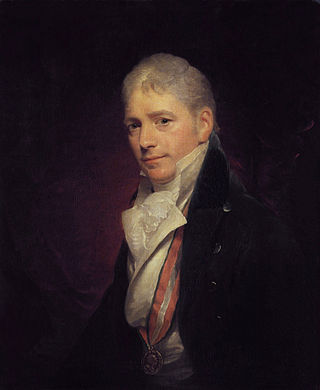
Sir Peter Francis Lewis Bourgeois RA was an English landscape painter and history painter, and court painter to king George III of the United Kingdom.

Rosa Winifred Nicholson was a British painter. She was married to the painter Ben Nicholson, and was thus the daughter-in-law of the painter William Nicholson and his wife, the painter Mabel Pryde. She was the mother of the painter Kate Nicholson.
Sir John Morris, 1st Baronet, was a British industrialist, active in copper-smelting and coal-mining in Swansea, South Wales.
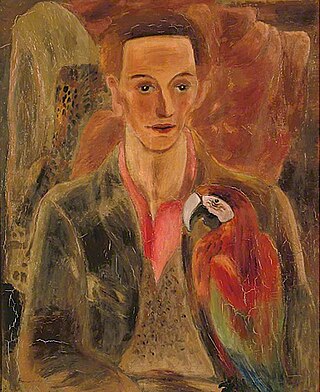
Sir Cedric Lockwood Morris, 9th Baronet was a British artist, art teacher and plantsman. He was born in Swansea in South Wales, but worked mainly in East Anglia. As an artist he is best known for his portraits, flower paintings and landscapes.
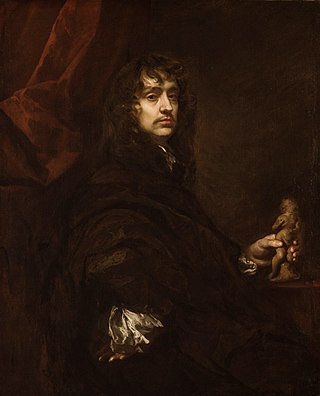
Sir Peter Lely was a painter of Dutch origin whose career was nearly all spent in England, where he became the dominant portrait painter to the court. He became a naturalised British subject and was knighted in 1679.

Sir George Howland Beaumont, 7th Baronet was a British art patron and amateur painter. He played a crucial part in the creation of London's National Gallery by making the first bequest of paintings to that institution.

Christopher David Williams was a Welsh artist.

Charles Noel Noel, 1st Earl of Gainsborough, known as Charles Edwardes until 1798, as Charles Noel between 1798 and 1823 and as the Lord Barham between 1823 and 1841, was a British peer and Whig politician.
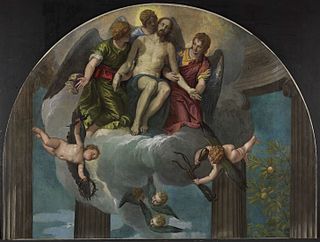
The Petrobelli Altarpiece is an oil painting on canvas of c. 1563 by Paolo Veronese, the remaining fragments of which are now divided between four museums.

Portrait of Margaret Desenfans is a 1757 portrait of Margaret Desenfans by the English painter Joshua Reynolds. It was listed as part of her husband Noel's art collection in 1791 but remained in her own family's collection until being sold by auction in 1930 That year Dulwich College commissioned Moussa Ayoub to produce a copy of the original portrait. The original then remained lost until 2013, when its private owner loaned it for an anniversary exhibition at the Dulwich Picture Gallery, which Margaret and her husband founded.
Lucy Manners, Duchess of Rutland, was a British heiress who married John Manners, 2nd Duke of Rutland.
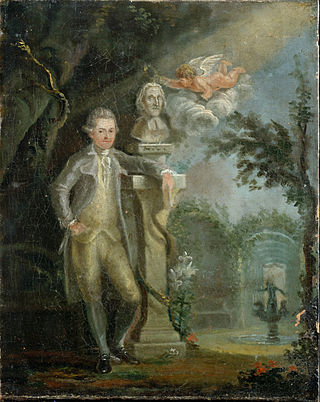
Noël Desenfans was a French-born art dealer mainly active in Britain, most notable for laying the foundation for the Dulwich Picture Gallery in London alongside the landscape painter Francis Bourgeois.
The Morris baronetcy, of Clasemont in the County of Glamorgan, was created in the Baronetage of the United Kingdom on 12 May 1806 for the copper and coal magnate, John Morris. The 1st baronet had founded Morriston, the industrial suburb of Swansea, which was overlooked by the family seat at Clasemont. This residence was later knocked down and the stones were incorporated into a new family house at Sketty Park. Various lines died out, and the baronetcy eventually came to the 8th baronet, George Lockwood Morris, who succeeded at the age of 88, three months before his death. The 8th baronet had been a local industrialist and a Welsh international rugby player. The ninth baronet, the 8th baronet's son, was the painter and horticulturalist Cedric Morris.

















